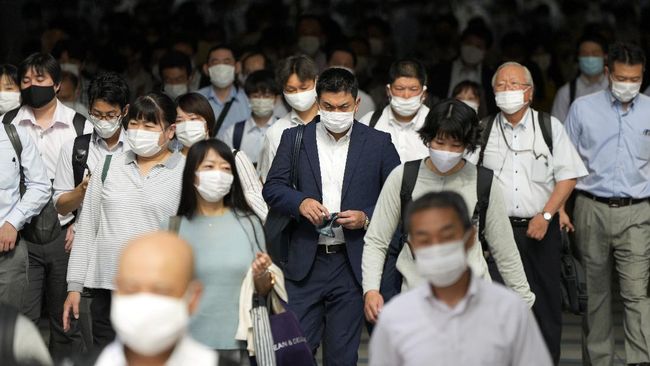Japan News: An infection called STSS is spreading rapidly in Japan. This infection eats human flesh from inside and causes death in about 48 hours. In such a situation, it is very important to have complete information about this infection. Watch the video till the end for more information.
An alarming infection, known as Streptococcal Toxic Shock Syndrome (STSS), is spreading rapidly in Japan, raising public health concerns and demanding urgent attention. This infection, which aggressively eats human flesh from the inside, can lead to death within 48 hours of onset. Given the severity and rapid progression of STSS, it is crucial to be well-informed about this deadly infection, its symptoms, causes, and preventive measures. This comprehensive guide provides an in-depth understanding of STSS, equipping you with the knowledge to recognize and respond to this life-threatening condition.
Understanding STSS
Streptococcal Toxic Shock Syndrome (STSS) is a rare but severe infection caused by group A Streptococcus bacteria. These bacteria are commonly found in the throat and on the skin. While they usually cause mild infections like strep throat or impetigo, in some cases, they can lead to invasive and deadly infections such as STSS. The bacteria release toxins that trigger an exaggerated immune response, leading to severe inflammation, tissue damage, and organ failure.
Symptoms of STSS
The symptoms of STSS can escalate rapidly, often within hours. Early recognition of these symptoms is critical for timely intervention. Key symptoms include:
- High Fever: A sudden and high fever is one of the first signs of STSS. The body’s temperature can spike dramatically as it fights the infection.
- Severe Pain: Intense pain, often disproportionate to the apparent injury or infection site, is common. This pain is usually localized in the muscles or joints.
- Redness and Swelling: The affected area may become red, swollen, and warm to the touch, indicating severe inflammation.
- Low Blood Pressure: A rapid drop in blood pressure (hypotension) can occur, leading to dizziness, confusion, and even shock.
- Organ Failure: As the infection progresses, it can lead to multiple organ failure, including kidney failure, liver dysfunction, and respiratory distress.
Causes and Transmission
Group A Streptococcus bacteria are transmitted through direct contact with infected wounds or sores, respiratory droplets from an infected person, or by touching surfaces contaminated with the bacteria. While many people carry these bacteria without any symptoms, certain factors can increase the risk of developing STSS:
- Open Wounds: Cuts, surgical incisions, or other skin injuries can provide an entry point for the bacteria.
- Compromised Immune System: Individuals with weakened immune systems are more susceptible to severe infections.
- Chronic Illnesses: Conditions such as diabetes, cancer, or chronic heart disease can increase vulnerability to STSS.
Rapid Progression and Fatality
One of the most alarming aspects of STSS is its rapid progression. The infection can spread quickly through the bloodstream, releasing toxins that cause widespread tissue damage. If not treated promptly, STSS can lead to death within 48 hours. The aggressive nature of the bacteria and the body’s intense immune response contribute to the rapid deterioration of the patient’s condition.
Diagnosis and Treatment
Early diagnosis and treatment are crucial to improve the chances of survival. Medical professionals use various diagnostic methods to confirm STSS, including:
- Blood Tests: Blood tests can detect the presence of group A Streptococcus bacteria and assess organ function.
- Imaging: Imaging studies like X-rays or CT scans can help identify the extent of tissue damage.
- Tissue Samples: Samples from the infected area can be analyzed to identify the bacteria and determine appropriate antibiotic treatment.
Treatment for STSS typically involves a combination of antibiotics to eradicate the bacteria and supportive care to manage symptoms and complications. In severe cases, surgical intervention may be necessary to remove infected tissue and prevent the spread of the infection.
Preventive Measures
Preventing the spread of STSS involves several key measures:
- Hygiene Practices: Regular hand washing with soap and water, especially after coughing, sneezing, or touching surfaces, can reduce the risk of infection.
- Wound Care: Properly cleaning and covering wounds can prevent bacteria from entering the body.
- Avoiding Close Contact: Avoid close contact with individuals who have streptococcal infections or symptoms of strep throat.
- Prompt Medical Attention: Seeking immediate medical attention for severe pain, fever, or other symptoms can lead to early diagnosis and treatment, improving outcomes.
Public Health Response in Japan
The rapid spread of STSS in Japan has prompted a robust public health response. Authorities are working to increase awareness about the infection, its symptoms, and preventive measures. Public health campaigns emphasize the importance of hygiene practices, early recognition of symptoms, and seeking prompt medical care.
Healthcare providers are being trained to identify and manage STSS cases effectively. Hospitals and clinics are equipped with the necessary resources to diagnose and treat the infection promptly. Additionally, efforts are being made to monitor and control the spread of group A Streptococcus bacteria through surveillance and reporting systems.
The rapid spread of Streptococcal Toxic Shock Syndrome (STSS) in Japan is a significant public health concern. Understanding the symptoms, causes, and preventive measures of this deadly infection is crucial for safeguarding individual and public health. Early recognition and prompt medical intervention can significantly improve the chances of survival. By following recommended hygiene practices and being vigilant about symptoms, individuals can play a vital role in preventing the spread of STSS. For more detailed information and expert insights, watch the full video provided. Stay informed, stay safe.


